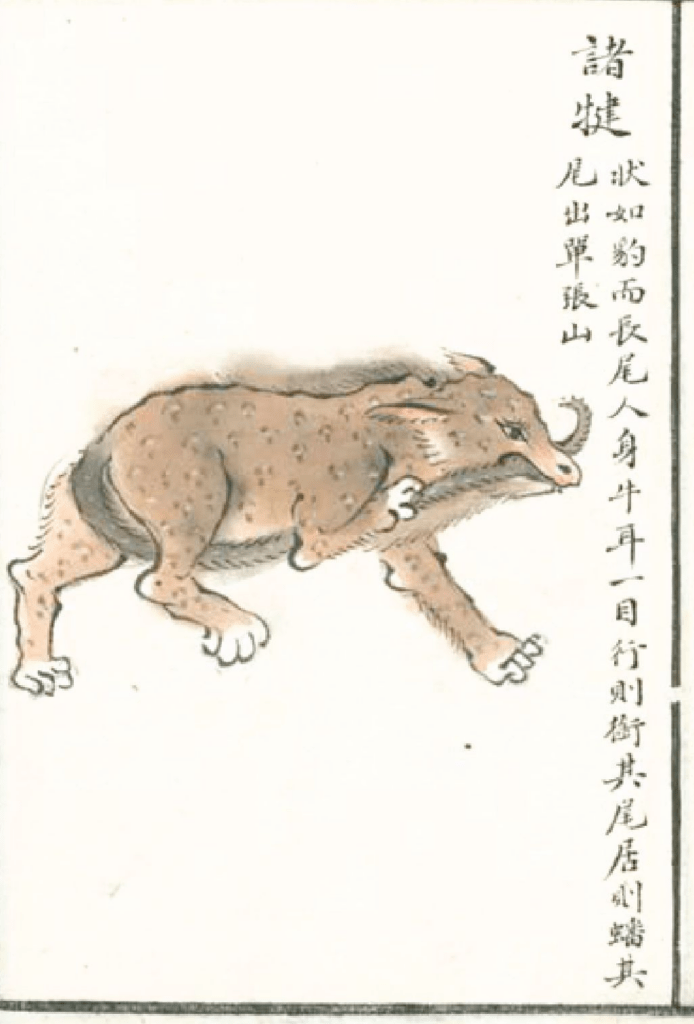Chinese Yokai
In the rich tapestry of Eastern folklore, the introduction of Chinese Yokai, known as Yaoguai(妖怪), weaves a distinct narrative when compared to their Japanese counterparts, the Yokai. While sharing a semblance in their supernatural essence, these entities diverge in several intriguing facets.
Linguistically, the disparity lies in the terms themselves: “Yokai” denotes an enigmatic apparition in Japan, while “Yaoguai” embodies an enticing demon in China.
Visually, the contrast is stark; Japanese Yokai exhibit whimsical, often cartoonish forms, while Chinese Yaoguai adopt a more somber, realistic guise and are often associated with human possession. Culturally, Yokai are entrenched in Japanese society, familiar to many, while Yaoguai’s presence remains less widespread beyond China’s borders.
Moreover, their roles diverge; Yokai lean towards mischievousness but benign intent, even offering protection, whereas Yaoguai are perceived as malevolent, posing threats to human safety.
Within these distinctions lies a tapestry of supernatural lore, highlighting the nuanced variations between these captivating entities in their respective cultural landscapes.
YouYou/峳峳
Bo/駮
ZhuRu/朱獳

Zhuru(朱獳) is a mythical beast that lives in the mountains. It looks like a fox with fins like a fish. Its cry sounds like it is calling its own name. Wherever it appears in a country, that country will experience something that causes fear.
《山海經 東次二經》
又南三百裏,曰耿山,無草木,多水碧,多大蛇。有獸焉,其狀如狐而魚翼,其名曰朱獳,其鳴自,見則其國有恐。
ZhuHuai/諸懷

There is a beast that is like a bull with four horns, human eyes, and pig ears. It is called the “諸懷(Zhuhuai)”, and its cry is like a crying goose. It is a man-eater.
《山海經 北山經》
有獸焉,其狀如牛而四角、人目、彘耳,其名曰諸懷,其音如鳴雁,是食人。
FeiShu/飛鼠

In the Shanhaijing, there are also some descriptions of mythical creatures that are very realistic, like this one: Feishu is an animal there whose shape is like a rabbit but with a mouse’s head. It flies using its back.
《山海經·北山經》
又東北二百裏,曰天池之山,其上無草木,多文石。有獸焉,其狀如兔而鼠首,以其背飛,其名曰飛鼠。澠水出焉,潛於其下,其中多黃堊
PaoXiao/狍鴞

狍鴞(Paoxiao) is shaped like a sheep with a human face. Its eyes are under its armpits. It has tiger teeth and human claws. Its cry is like that of a baby, and it eats people.
《山海經 北山經》
鉤吾之山有獸焉,其狀如羊身人面,其目在腋下,虎齒人爪,其音如嬰兒,名曰狍鴞,是食人。
ZhuJian/諸犍

In the mountains, there is a beast Zhujian(諸犍) that resembles a leopard. It has a long tail, a human head, cow ears, and only one eye. It often roars loudly. When it walks, it holds its tail in its mouth. When it sleeps, it curls its tail up.
《山海經 北山一經》
又北百八十裏,曰單張之山,其上無草木。有獸焉,其狀如豹而長尾,人首而牛耳,一目,名曰諸犍,善咤,行則銜其尾,居則蟠其尾。
ManMan/蠻蠻

In the Luo River(洛水), there are many 蠻蠻(Man man). Their bodies are like rats, and their heads are like turtles. Their sounds are like barking dogs.
《山海經·西山經》
又西二百里,至剛山之尾。洛水出焉,而北流注于河。其中多蠻蠻,其狀鼠身而鼈首,其音如吠犬
JiuWeiHu/九尾狐

Fox body, with nine tails, eats humans, appears in Qingqiu Mountain
《山海经》
青丘之山,有兽焉,其状如狐而九尾
ShanHui/山[犭軍]
![ShanHui/山[犭軍]: shaped like a dog with a human face,skilled in throwing objects and laughs when it sees people. It moves as fast as the wind. Whenever it appears, the world will be filled with strong winds.](https://weirdtales.me/wp-content/uploads/2024/01/image-16-694x1024.png)
Shanhui(山[犭軍]) lives in the mountains. It’s shaped like a dog with a human face,skilled in throwing objects and laughs when it sees people. It moves as fast as the wind. Whenever it appears, the world will be filled with strong winds.
《山海經 北山一經》
又北二百裏,曰獄法之山。瀤澤之水出焉,而東北流註於泰澤。其中多䲃魚,其狀如鯉而雞足,食之已疣。有獸焉,其狀如犬而人面,善投,見人則笑,其名山[犭軍(左右)],其行如風,見則天下大風。
